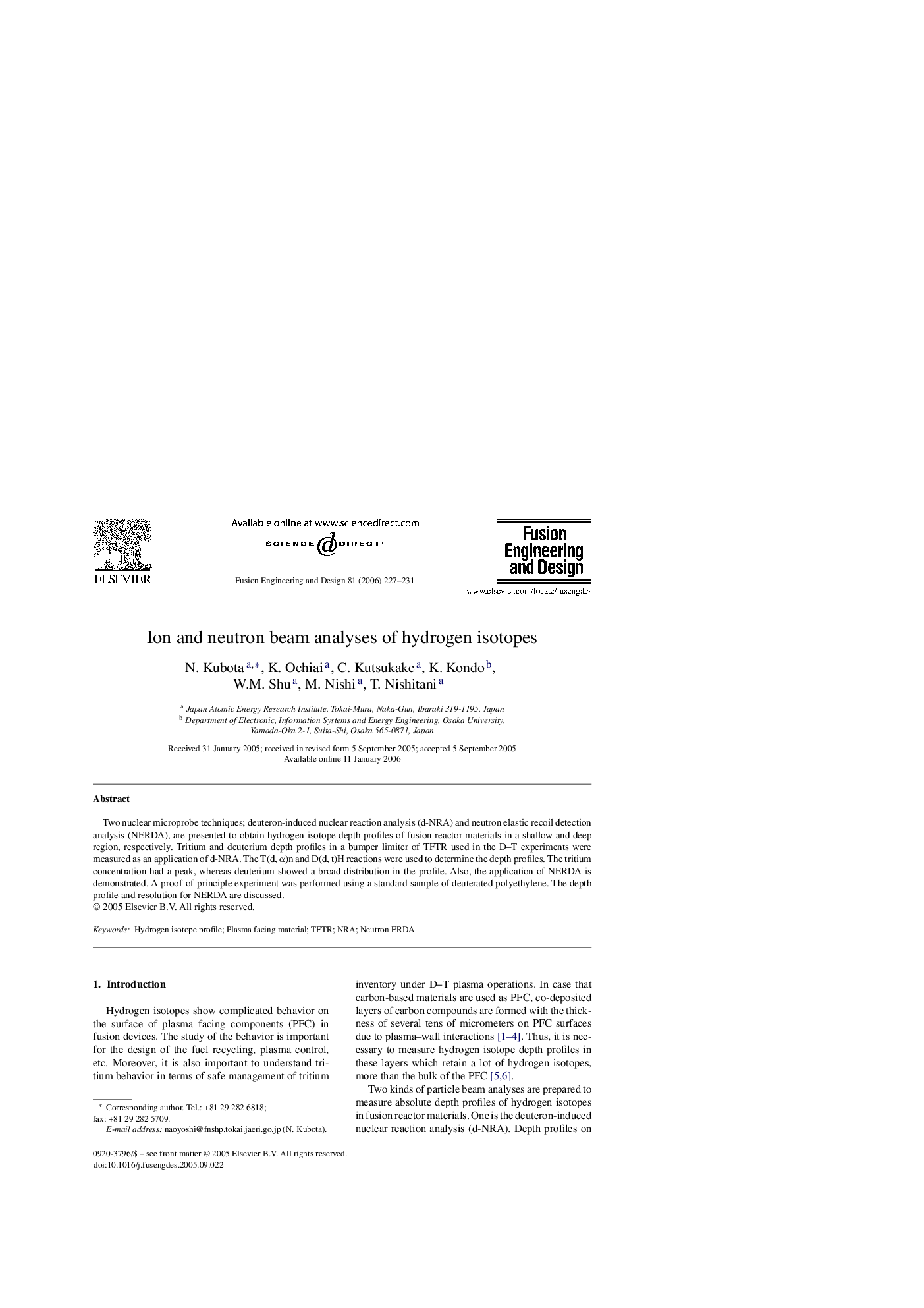| Article ID | Journal | Published Year | Pages | File Type |
|---|---|---|---|---|
| 273452 | Fusion Engineering and Design | 2006 | 5 Pages |
Two nuclear microprobe techniques; deuteron-induced nuclear reaction analysis (d-NRA) and neutron elastic recoil detection analysis (NERDA), are presented to obtain hydrogen isotope depth profiles of fusion reactor materials in a shallow and deep region, respectively. Tritium and deuterium depth profiles in a bumper limiter of TFTR used in the D–T experiments were measured as an application of d-NRA. The T(d, α)n and D(d, t)H reactions were used to determine the depth profiles. The tritium concentration had a peak, whereas deuterium showed a broad distribution in the profile. Also, the application of NERDA is demonstrated. A proof-of-principle experiment was performed using a standard sample of deuterated polyethylene. The depth profile and resolution for NERDA are discussed.
